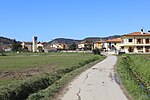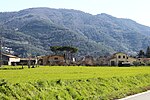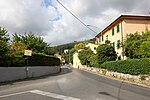Certosa di Farneta
Buildings and structures in LuccaCarthusian monasteries in ItalyMassacres committed by Nazi GermanyMassacres in 1944Massacres in Italy ... and 3 more
Massacres in the Italian Social RepublicMonasteries in TuscanyWar crimes of the Waffen-SS

Farneta Charterhouse, in Italian Certosa di Farneta (also Certosa di Santo Spirito di Farneta or Certosa di Maggiano) is a Carthusian monastery (charterhouse) just north of Lucca, region of Tuscany, Italy.
Excerpt from the Wikipedia article Certosa di Farneta (License: CC BY-SA 3.0, Authors, Images).Certosa di Farneta
Via per Chiatri, Lucca
Geographical coordinates (GPS) Address Nearby Places Show on map
Geographical coordinates (GPS)
| Latitude | Longitude |
|---|---|
| N 43.8659 ° | E 10.417 ° |
Address
Certosa di Farneta
Via per Chiatri
55056 Lucca
Tuscany, Italy
Open on Google Maps











